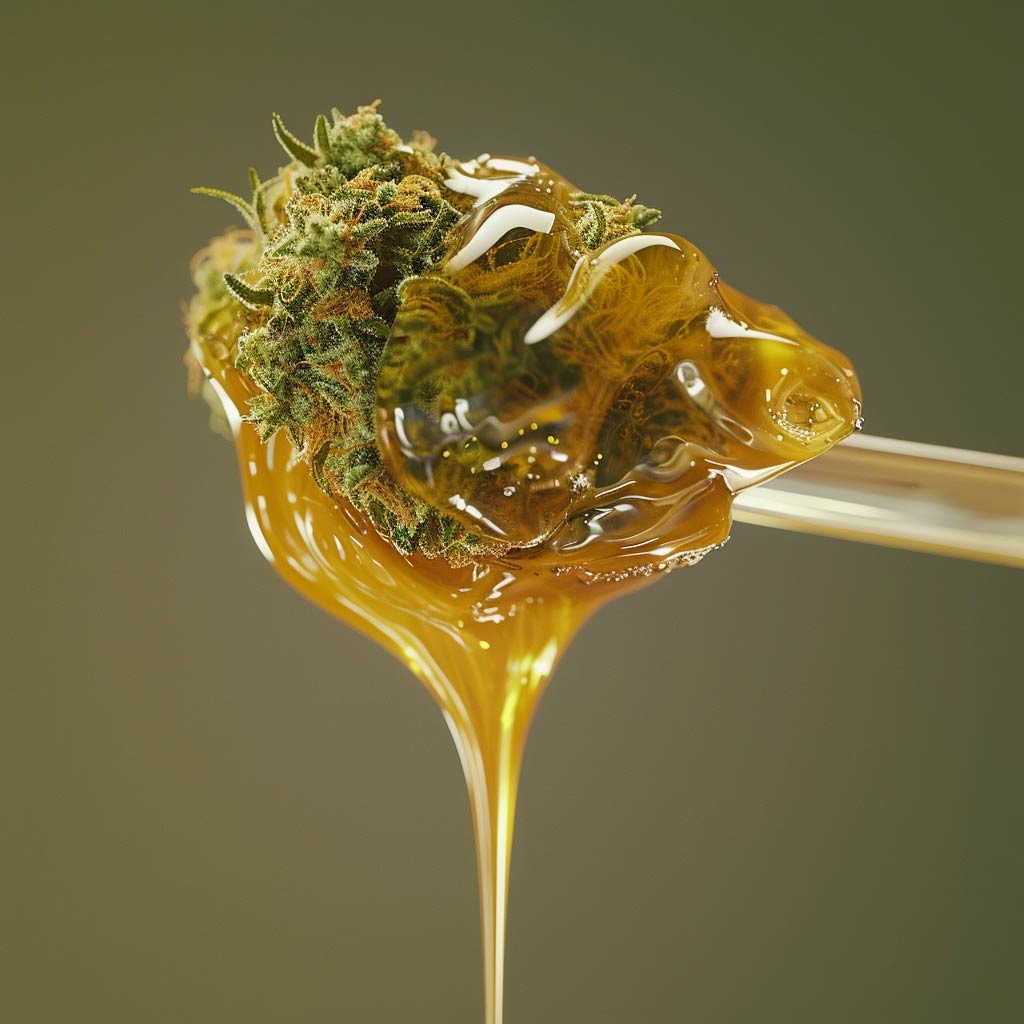What are Dabs?
Dabbing is a method of using cannabis in a concentrated form. Known as “dabs,” these concentrates of marijuana typically appear as wax-like substances with a dark brown or yellow hue and possess a sticky, gummy texture.
Dabs are highly potent cannabis concentrates like shatter, wax, budder, crumble, live resin, or pull ‘n snap, with THC levels ranging from 50% to 90%. This high concentration can lead to nearly instantaneous highs, hallucinations, extreme behavior changes, and even overdoses.
According to NIDA;
Solvent-based products tend to be especially potent, with THC levels documented at an average of about 54-69% and reported to exceed 80%, while non-solvent-based extraction methods produce average THC levels between 39-60%.In comparison, the THC content in marijuana plant material, which is often used in marijuana cigarettes, is lower—with samples seized by the U.S. Drug Enforcement Agency averaging just over 15%. Not only do concentrates have high levels of THC, but dabbers inhale the entire amount all at once—in a single breath.
As a result, concentrates can deliver extremely large amounts of THC to the body quickly. The risks of physical dependence and addiction increase with exposure to high concentrations of THC, and higher doses of THC are more likely to produce anxiety, agitation, paranoia, and psychosis.
To put it into perspective, a single “hit” or “dab” of wax, equivalent to the size of a pinhead, may be roughly equal to one or more joints of traditional marijuana.
Weed dabbing involves vaporization rather than combustion, potentially reducing the inhalation of harmful byproducts from smoke. To dab, a nail, usually made of materials like titanium, quartz, or ceramic, is heated to an extremely high temperature using a torch. Once hot, a small amount of cannabis concentrate is applied to the nail. The resulting vapor is then inhaled through a water pipe.
How Addictive is Weed Dabbing?
Weed dabbing, or smoking dab, is described as highly addictive, likened to pot on steroids. This practice carries a significant risk of psychological addiction, particularly among young people.
The intense high from dabbing can be so enjoyable that individuals may find it difficult to quit. Over time, tolerance to THC can develop, necessitating larger amounts of the concentrate to achieve the desired effects, thus increasing the potential for dependence.
How Does Smoking Dab Make You Feel?
- It slows down your cognitive processes and physical movements due to the high THC levels impairing your ability to think and react quickly.
- Triggers intense thirst and hunger, commonly known as dry mouth and the munchies.
- Causes unique stomach sensations, ranging from fullness to discomfort or nausea.
- Can distort your perception of time, making minutes feel like hours.
Types of Dabs: Dabs, Shatter, and Wax
Cannabis concentrates come in various forms such as shatter, wax, budder, crumble, cannabis oil, hash oil, and resin. Each type offers a distinct combination of properties and appearance, making them highly potent variations of marijuana.
Side Effects of Dabbing
Physical Effects
- Coughing and wheezing due to inhaling toxic compounds.
- Rapid heartbeat and increased blood pressure.
- Blackouts, trembling, decreased coordination, vomiting, fainting, and changes in sensory perception.
Psychological Side Effects
- Uncontrollable anxiety, paranoia, violence, agitation, memory problems, psychosis, depression, confusion, irritability, tension, hallucinations, and panic attacks.
Dangers and Risks of Dabbing
Dabbing with THC dab, wax dab, or smoking wax significantly intensifies the experience beyond regular marijuana use. Here are the crucial dangers of dabbing:
- Rapid Tolerance Growth: High THC levels lead to fast tolerance buildup, potentially evolving into an addiction.
- Dose Management Issues: It’s tricky to determine the right amount of these potent concentrates, leading to unpleasant effects.
- Unknown Ingredients Exposure: Commercial concentrates might have harmful additives or contaminants.
- Severe Physical and Mental Side Effects: Overdose can cause nausea and intense paranoia.
- Extraction Process Risks: Butane extraction carries the risk of explosions.
Can You Overdose On Dabs?
While you can’t die from a cannabis overdose, excessive use can lead to unpleasant side effects. The long-term effects of dabbing are still under research.
How to Stop Dabbing?
Dabbing Withdrawal Symptoms
- Anxiety and Depression: Emotional responses are common.
- Cognitive Challenges: Difficulties in thinking or concentration.
- Sleep Disturbances: Changes in sleep patterns.
- Confusion: Decision making and orientation issues.
- Paranoia: Increased distrust or irrational fears.
- Tension and Irritability: As the body adjusts to lower THC levels.
Seeking Help for Stopping Dabbing
Resources include counseling, support groups, and treatment programs specialized in cannabis dependency:
- Professional Drug Rehab Programs: Comprehensive treatment for dabbing addiction.
- Support Groups: Like Marijuana Anonymous, for sharing experiences and support.
- National Council on Alcoholism and Drug Dependence (NCAAD): Provides referrals to community resources.
Dabbing Glossary
710: Symbolizes cannabis concentrates due to its resemblance to “OIL” when flipped.
Alcohol dab extraction: THC extraction using alcohol.
Banger Hanger: Device for dabbing.
Butter, Budder, Badder: Cannabis concentrates with a butter-like consistency.
Blasting: Extracting concentrates with butane, due to explosion risks.
Butane Extraction: Using butane to concentrate THC.
Butane Hash Oil (BHO): Concentrated cannabis extract using butane.
Butane Torch: Used for vaporizing concentrates.
Carb Cap: Helps trap vaporized concentrates.
Crumble weed: Named for its crumbly texture.
CO2 Extraction: Concentrating THC with carbon dioxide.
Concentrate weed, Concentrate THC: High-potency forms of cannabis.
Concentrate Pipe: Designed for inhaling concentrates.
Dabber: Tools used in dabbing.
Dab Nail: Where concentrates are placed for vaporization.
Dab Oil, Dab Pen, Dab Rig, Dabbing dome: Various tools and methods for dabbing.
Ear Wax weed, Errl, Glass, Glycerin Extraction, Ice Hash, Hash, Hash Oil, Honey, Ice Wax, ISO Oil, Kief, Knife Hits, Liquid Gold, Live Resin, Nug, Nug Run, Oil Rig, Pressed Hash, Reclaim, Resin, Seasoning a Nail, Shatter, Quick Wash ISO (QWISO), Vape Oil, Vapor Rig, Vapor Straw, Wax: Terms related to cannabis concentrates, extraction methods, and equipment.
Sources
NIH Cannabis Dabbing
NIH A Little Dab Will Do: A Case of Cannabis-Induced Psychosis
NIH To Dab or Not to Dab: Rising Concerns Regarding the Toxicity of Cannabis Concentrates
Harvard Medical School Cannabis and the Brain
DEA NTF dismantles butane hash oil extraction lab 15 times …








